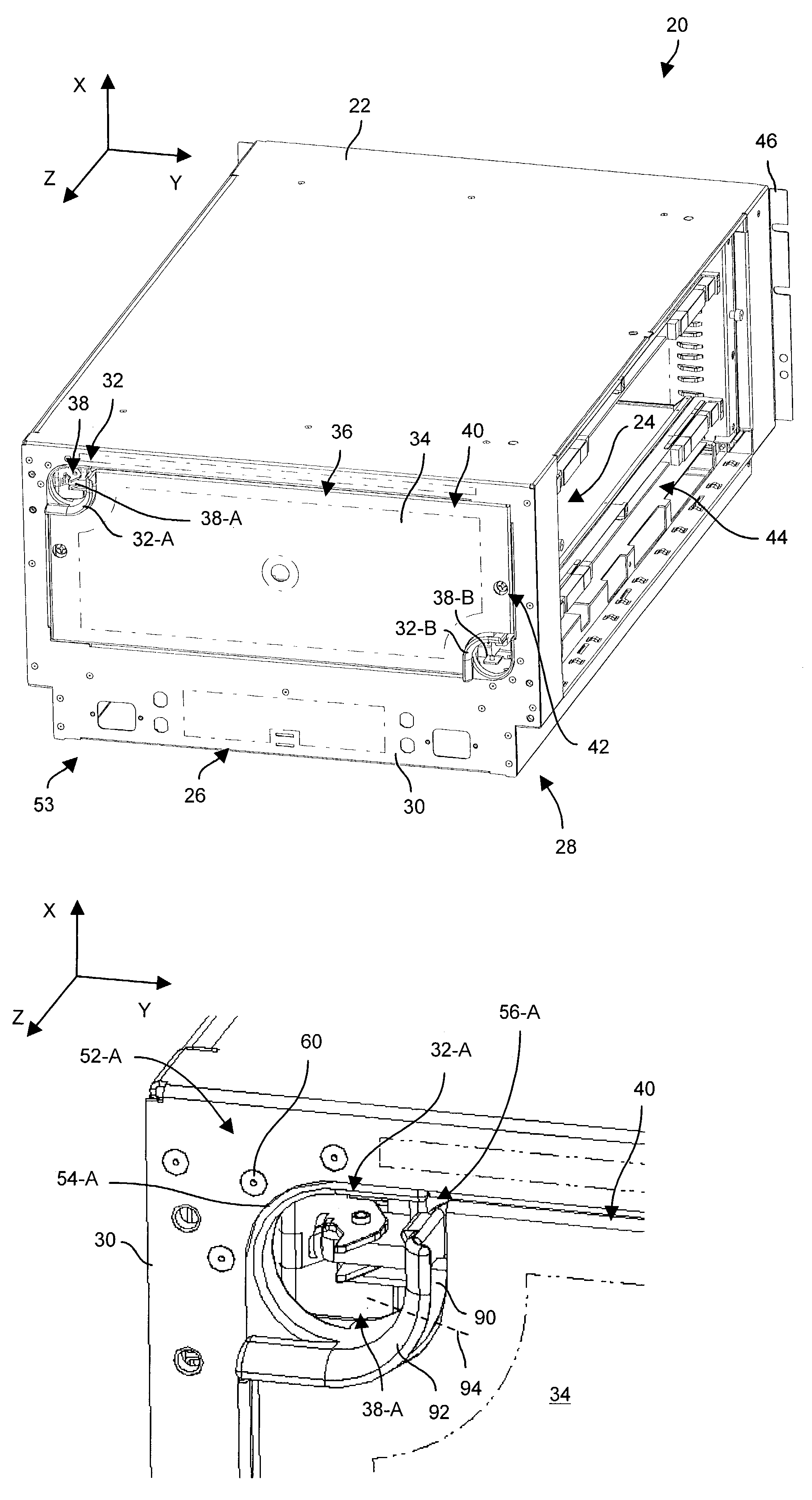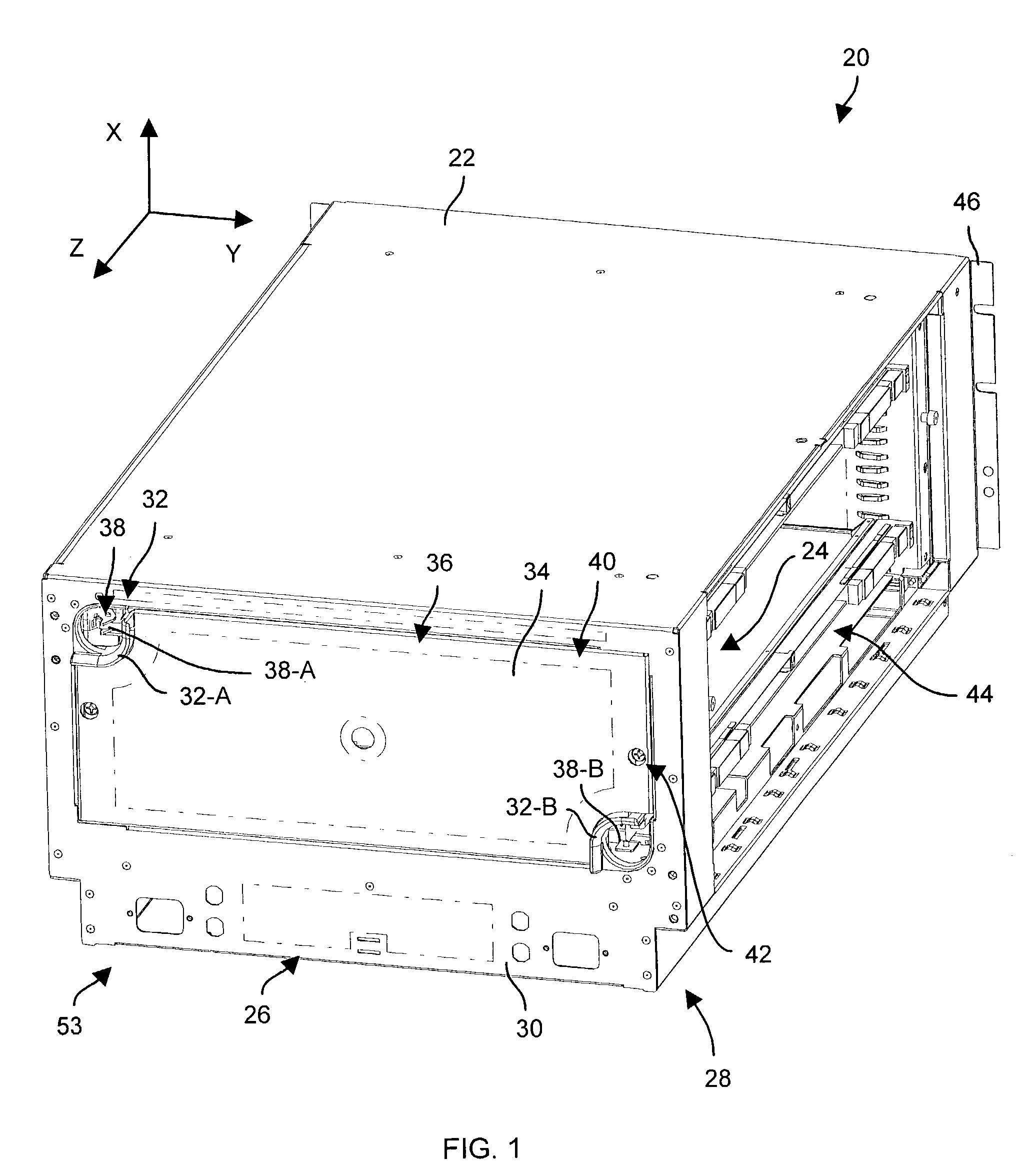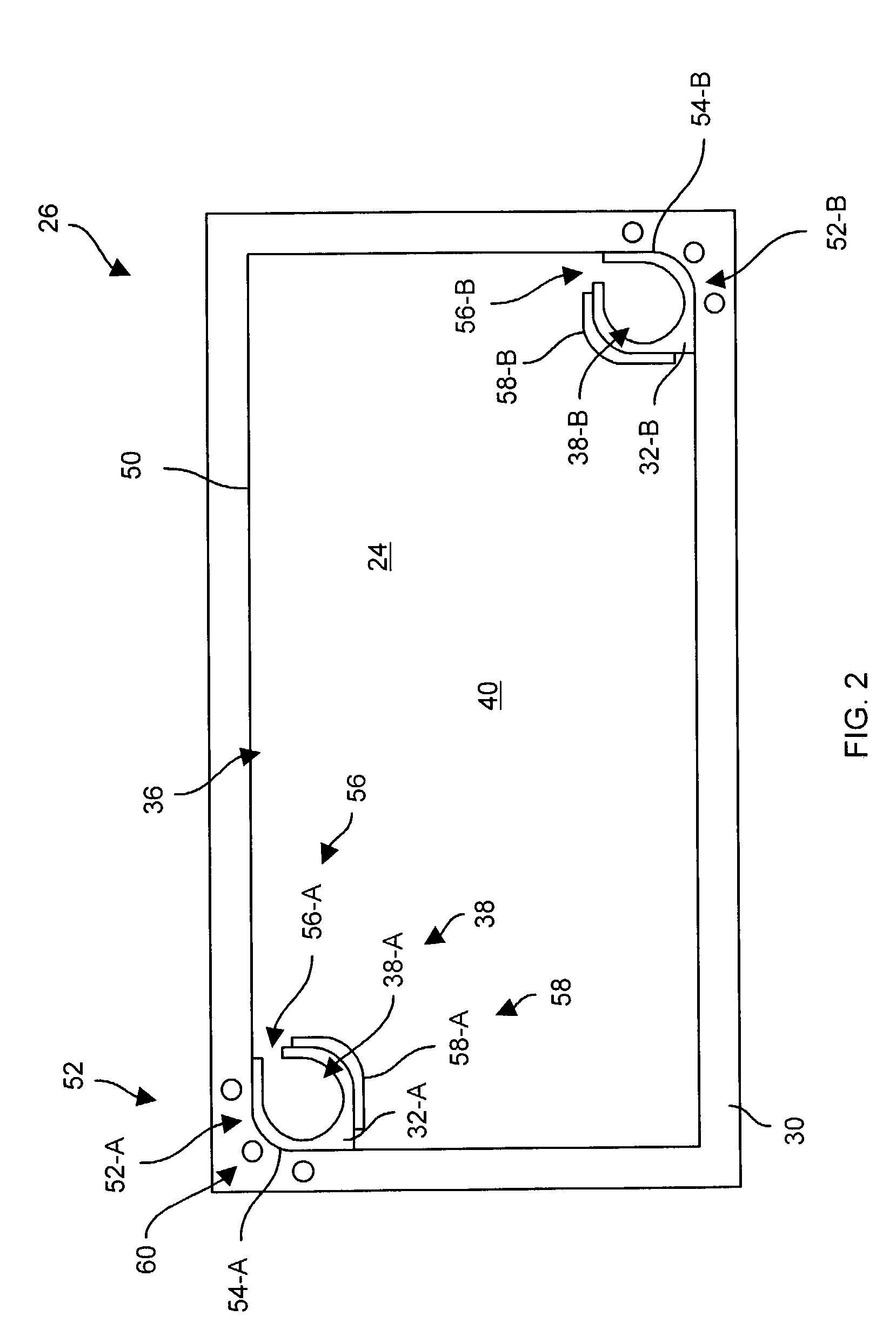Techniques for managing a set of cables
a technology for managing cables and cables, applied in the field of techniques, can solve the problems of affecting the operation of the support structure, affecting the service life of the cable, and requiring a significant amount of manual effort and time, and achieve the effect of preventing the stress on the cable end
- Summary
- Abstract
- Description
- Claims
- Application Information
AI Technical Summary
Benefits of technology
Problems solved by technology
Method used
Image
Examples
Embodiment Construction
[0027]The invention is directed to techniques for managing a set of cables (e.g., fiber optic cables, electrical signal cables, combinations thereof, etc.) using a set of bushings that defines both a set of cable ports and an access port within a frame opening. Accordingly, the frame opening is well-suited for both locating cables (e.g., through the set of cable ports), as well as for other forms of access (e.g., manual access through the access port by a technician when plugging or unplugging cable connectors) in a well-organized manner.
[0028]FIG. 1 shows a cable management system 20 which is suitable for use by the invention. As will be explained below, the cable management system 20 is well-configured to manage a set of cables. The cable management system 20 includes a chassis 22, a communications interface 24 (illustrated by the arrow 24 in FIG. 1), and an access panel assembly 26. The communications interface 24 is disposed along a side 28 of the chassis 22. The access panel as...
PUM
 Login to View More
Login to View More Abstract
Description
Claims
Application Information
 Login to View More
Login to View More - R&D
- Intellectual Property
- Life Sciences
- Materials
- Tech Scout
- Unparalleled Data Quality
- Higher Quality Content
- 60% Fewer Hallucinations
Browse by: Latest US Patents, China's latest patents, Technical Efficacy Thesaurus, Application Domain, Technology Topic, Popular Technical Reports.
© 2025 PatSnap. All rights reserved.Legal|Privacy policy|Modern Slavery Act Transparency Statement|Sitemap|About US| Contact US: help@patsnap.com



